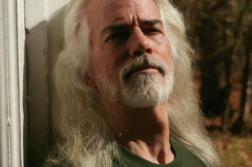WHEN Lisa Diamond’s book Sexual Fluidity: Understanding Women’s Love and Desire (Harvard University Press, 2008) was published last year, it was poised to become a fresh, new psychological study about women’s sexuality today. But Diamond, an associate professor of psychology and gender studies at the University of Utah, didn’t expect it to become a controversial catalyst for mainstream discussions about same-sex desire on a national scale. Soon after its release, the author was interviewed by news organizations around the country and appeared on talk shows and in newspapers, journals, and magazines. She even discussed the book on Oprah. (It was reviewed by Cassandra Langer in this journal’s September-October 2008 issue.)
One year later, Diamond discusses the repercussions of the study, which followed more than a hundred women for a decade, charting revelations about lesbianism and bisexuality among mostly heterosexual-identified females. Based on this study—combined with recent brain research that seeks to understand erotic attraction and romantic affection on the neurochemical level—Diamond concludes that female sexual response is much more complex than a simple dichotomy between “gay” and “straight,” and that it’s often subject to change over the course of a lifetime. While Christian groups have used the book to suggest same-sex desire is a choice, GLBT activists have embraced the work as a testament to the complex nature of sexual identity and the need for a broad tolerance of all sexual and affectional permutations.
Currently Lisa Diamond is preparing to embark upon a second study, this time on the impact of estrogen on sexual attraction. Diamond, who’s openly gay herself, spoke with this interviewer by phone from the Salt Lake City campus where she teaches.






